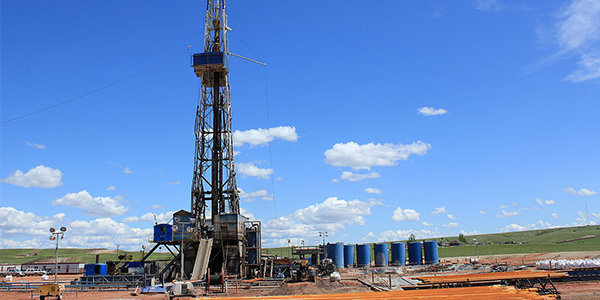The U.S. Department of Energy last week advanced a group of technologies in a manufacturing competition that could help geothermal grow quickly as a ubiquitous, baseload power.
“If we crack the nut on being able to drill for geothermal anywhere, we’ll have a global clean energy source that can be located near population centers, is baseload and has a small footprint,” said Jamie Beard, executive director of the Geothermal Entrepreneurship Organization (GEO).
Three teams with a focus on drilling technologies were named semifinalists in DOE’s geothermal manufacturing competition during the NextGen Geo event Thursday. The Morgantown, W.Va.-based team behind project “Hot Hammer” designed an air hammer bit that could stay intact up to 600 degrees Celsius, which the team said in its submission would “drastically” speed up the drilling process. In addition, Ozark Integrated Circuits from Fayetteville, Ark., and Team AC from Cambridge, Mass., addressed vibration issues that affect sensors and generators during drilling.

Improving geothermal drilling techniques through innovation investment and collaboration with the oil and gas sector could rapidly expand geothermal to fulfill a growing interest in 24/7 carbon-free power. | Lindsey G, CC BY-SA 2.0, via Wikimedia Commons
GEO is also looking to the oil and gas industry to support rapid expansion of the geothermal industry. Doing so, Beard said during the event, will allow geothermal to help the clean energy sector fulfill an interest from corporations to truly decarbonize their energy purchases.
More than 100 private corporations have set 100% renewable energy targets over the last decade, but those targets are most often fulfilled through a balance of renewable purchases and fossil fuel energy use. A growing number of private industry climate goals are making 24/7, carbon-free energy the gold standard for power purchases, according to Tim Latimer, CEO of Fervo Energy.
“For the first time, organizations like Google and Los Angeles [Department of Water and Power] are contemplating having clean energy that matches their load profiles 24 hours a day, seven days a week, 365 days a year, which is an entirely different problem than the accounting exercise that’s done for 100% renewable energy,” Latimer said during the event.
Those 24/7, carbon-free energy targets are doable, according to Latimer.
“Study after study … have shown that wind and solar along with batteries are very important parts of this puzzle, and they’re going carry us a long way, but we need a resource to complement them that works 24/7,” he said.
Geothermal energy could be that resource if it can make a giant leap forward to being affordable and available where needed. Beard believes that bringing oil and gas together with geothermal can put the deep history of oil and gas drilling to work for clean power.
“The geothermal industry and the oil and gas industry are essentially the same business,” she said. “They both characterize and explore for an energy asset that’s in the subsurface, and they drill for an energy asset that’s in the subsurface.”
The two sectors have overlapping workforces and methodologies, and oil and gas has existing equipment that could be deployed immediately to start producing clean energy projects, she said. And the oil and gas industry has shown an interest in geothermal already.
“We’re finding a lot of willing partners in oil and gas companies that are trying to chart their new course in the energy transition,” he said. “Companies like Schlumberger, Shell and Chevron that have become experts in drilling over the last 150 years are now applying their expertise quite rigorously to the geothermal sector.”
Semifinalists
DOE named four geothermal manufacturing competition semifinalists, all based in Texas, focused on improving technologies that will keep fluids from mixing during drilling: Baker Hughes; Welltec; Downhole Emerging Technologies; and Huilin Tu, project manager and principal engineer at Schlumberger.
In addition, DOE named three semifinalists focused on logging and production:
- PLUGS from Morgantown, W.Va.;
- Ultra-High Temperature Logging Tool from Houston; and
- Multiscale Systems from Worcester, Mass.



